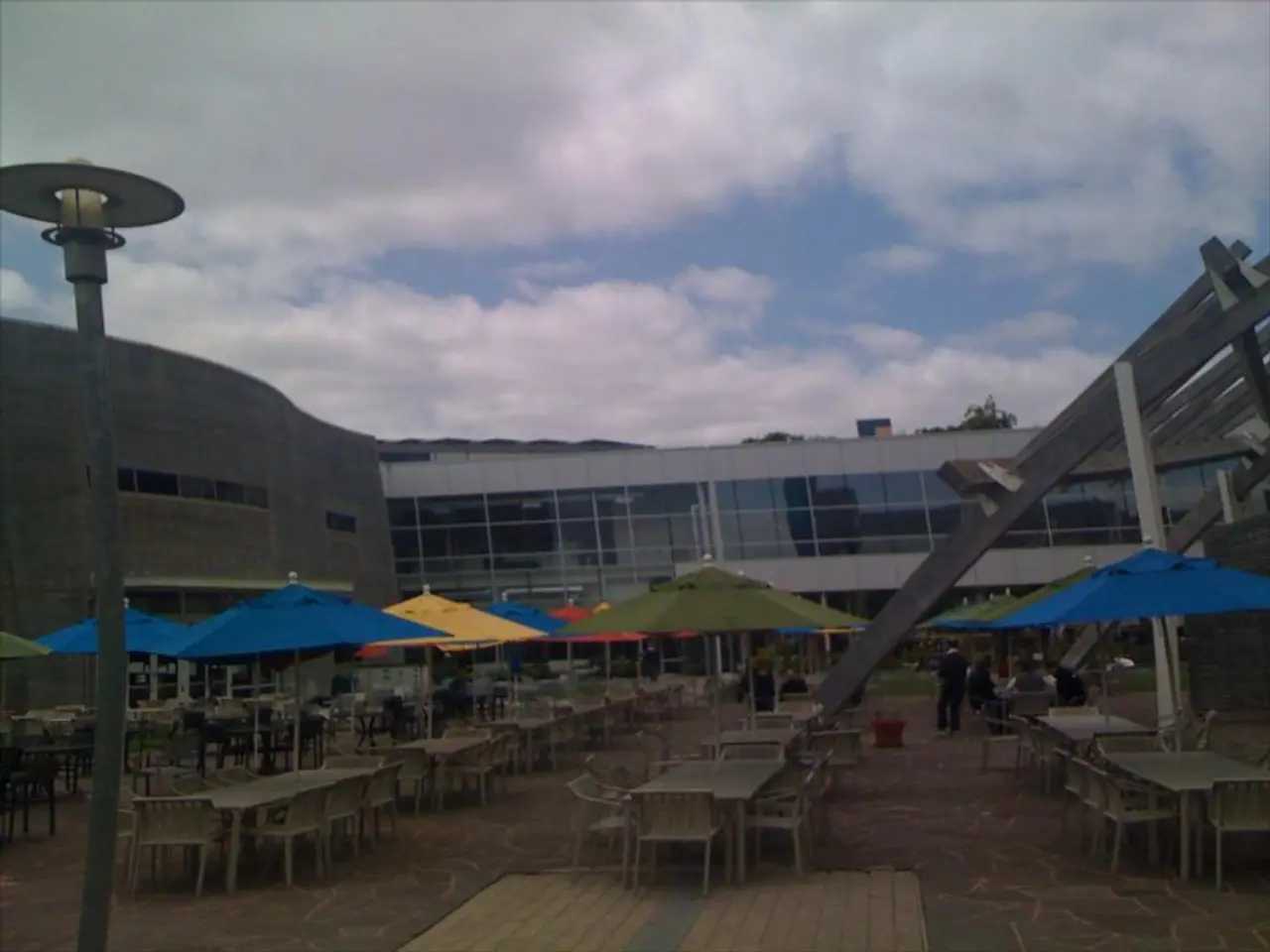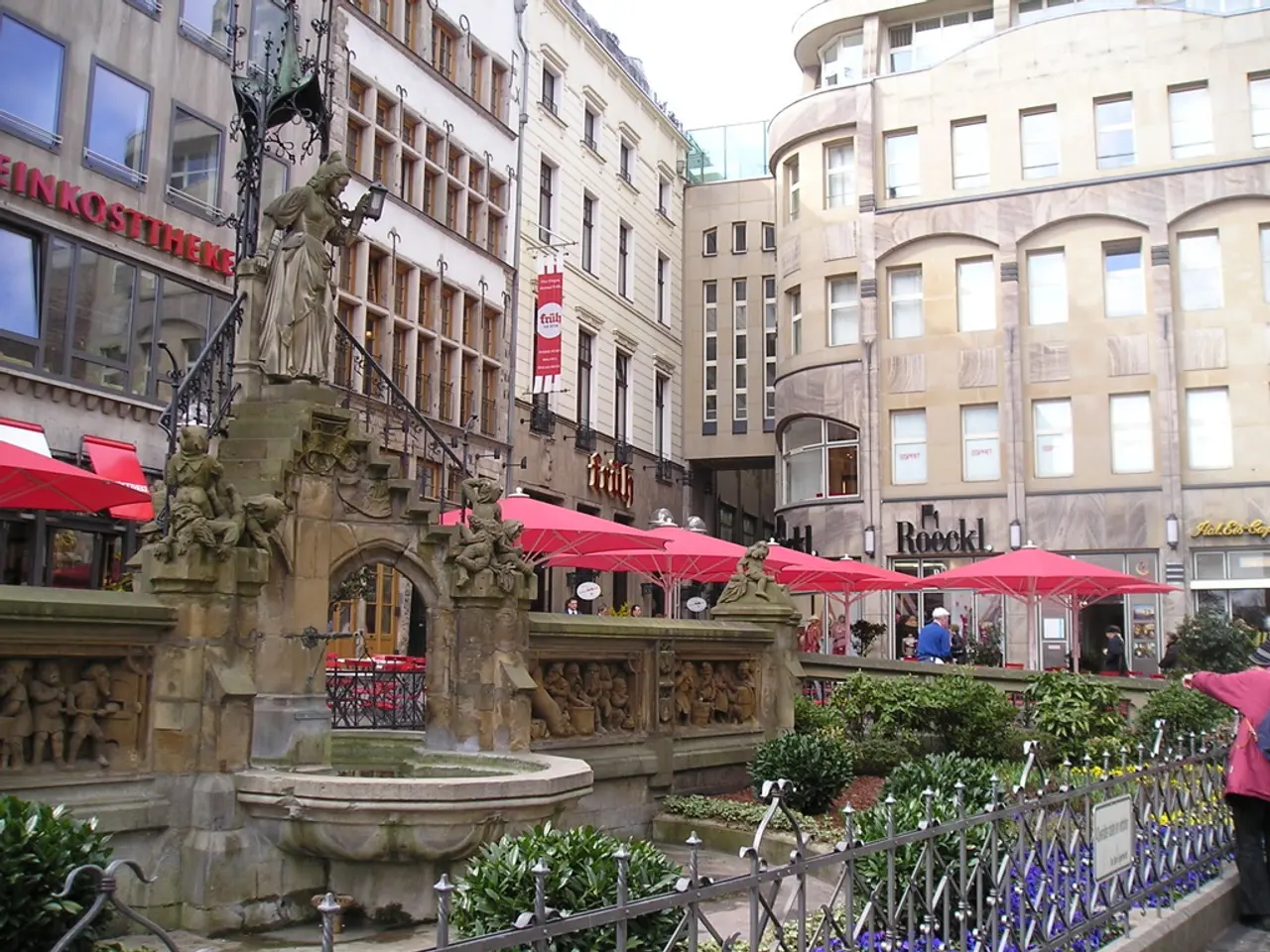Urban Design Influenced by Ecological Landscape Arrangement for Sustainable Urban Environments
In the rapidly expanding urban landscapes, the importance of preserving and enhancing ecosystems has never been more crucial. Here's how the principles of landscape ecology can guide urban planning to create sustainable cities that support both people and diverse ecosystems.
Both the quality and quantity of habitats are essential for rich and flourishing ecosystems. Urban green spaces should prioritise the size and quality of habitat patches, rather than merely increasing tree coverage or green area superficially. This approach ensures that native species can thrive, fostering a diverse and vibrant urban ecosystem.
Urban landscapes should be planned as mosaics of habitat patches, connected by ecological corridors that allow species movement and genetic exchange. These corridors, linking patches, prevent habitat fragmentation and support ecosystem resilience. The matrix, the spaces in between these patches such as farmland, are less habitable for most species.
The shape and edge effects of habitats play a significant role in their quality. Rounded or natural habitat patch shapes are preferable, as they reduce edge effects that are detrimental to edge-averse species. Better shape reduces vulnerability and supports ecological interactions.
Creating connected green corridors linking patches allows wildlife movement, enhancing ecological function and biodiversity. Urban planners must embrace the inherent disturbances of urban environments and design green infrastructure to be “safe-to-fail,” thereby enhancing the system’s resilience and adaptability to climate and social changes.
Urban green spaces should integrate biodiversity enhancement with social benefits such as mental health, social cohesion, and equitable access to nature, fostering sustainable and healthy communities. Collaborations between ecologists and urban planners help develop standards and design guidelines that are based on empirical landscape ecology principles rather than simple metrics like tree count or green area.
Incorporation of features like parks, green roofs, and preserved vegetation to manage stormwater, improve air and water quality, and support urban biodiversity is also crucial. These nature-based solutions contribute to a more sustainable urban environment.
Applying these landscape ecology principles allows urban planners to create sustainable cities that support both people and diverse ecosystems, enhance habitat quality, and increase ecological connectivity, thereby fostering resilient, green urban environments. Biodiversity, representing the foundation of all ecosystems and life on the planet, makes it crucial to conserve.
Landscape ecology is a field that investigates how the structure and features of a landscape affect the behavior of various species and the broader ecosystem over time and space. By applying its principles, we can create cities that not only combat emissions but also promote sustainability and biodiversity, ensuring a healthier and more vibrant future for all.
[1] Green City Initiative (2020). Green City Principles. Retrieved from www.greencityinitiative.eu
[2] European Landscape Convention (2000). Council of Europe. Retrieved from www.coe.int/landscapeconvention
[3] European Commission (2020). Green Infrastructure. Retrieved from ec.europa.eu/environment/nature/landscape/green-infrastructure_en.htm
[4] European Commission (2013). Nature-based Solutions. Retrieved from ec.europa.eu/environment/nature/policy/nature-based-solutions_en.htm
[5] Natural England (2017). Landscape Principles for Sustainable Urban Development. Retrieved from www.gov.uk/government/publications/landscape-principles-for-sustainable-urban-development/landscape-principles-for-sustainable-urban-development--2
- To preserve and flourish ecosystems in the growing urban sprawls, prioritizing the size and quality of habitats in urban green spaces is essential, instead of increasing tree coverage superficially.
- Urban landscapes should be designed as a mosaic of habitat patches, connected by ecological corridors, to prevent habitat fragmentation, support ecosystem resilience, and allow species movement and genetic exchange.
- The shape and edge effects of habitats play a significant role in their quality; natural, rounded habitat patch shapes are preferable as they minimize edge effects detrimental to edge-averse species.
- Urban planners should introduce connected green corridors linking patches, enhancing ecological function, biodiversity, and social benefits such as mental health, social cohesion, and equitable access to nature.
- Collaboration between ecologists and urban planners can help develop standards and design guidelines based on empirical landscape ecology principles, rather than simple metrics like tree count or green area.
- Incorporating nature-based solutions like parks, green roofs, preserved vegetation, and stormwater management features in urban designs can improve air and water quality, support urban biodiversity, and contribute to a more sustainable urban environment.
- By applying landscape ecology principles, we can create sustainable cities that support both people and diverse ecosystems, enhance habitat quality, increase ecological connectivity, and combat climate-change, ensuring a healthier and more vibrant future for all.




